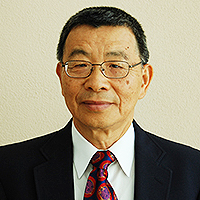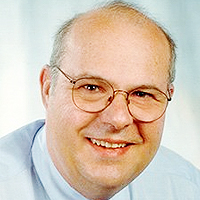Correlation between interdialytic weight gain, left ventricular hypertrophy and FGF- 23 in prevalent hemodialysis patients
Published on: 28th July, 2020
OCLC Number/Unique Identifier: 8648999984
Background:Patients with end-stage renal disease are suspected to have significant volume shifts and thereby cardiovascular strain as a result to interdialytic weight gain, chronic fluid overload and fluid removal during dialysis. In long-term hemodialysis patients, higher IDWG (interdialytic weight gain) could be associated with poor survival. Patients with the lowest interdialytic weight gain have the greatest survival. Certain laboratory and imaging modalities could help to assess and monitor the appropriate fluid balance for hemodialysis patients.
FGF -23 might be associated with cardiovascular morbidity in ESRD patients.
Objective: To evaluate correlation between hypervolemia and left ventricular hypertrophy and FGF-23 in hemodialysis patients.
Patients and Methods: This cross sectional study was conducted on 60 prevalent hemodialysis patients. Patients were divided into two groups according to interdialytic weight gain (IDWG): Group I (low IDWG): Patients with absolute weight gain < 3 kg. Group II (high IDWG): patients with weight gain ≥ 3 kg. FGF 23, routine laboratory tests and echocardiography were done for both groups.
Results: high IDWG group has higher systolic blood pressure and LVMI than low IDWG group. In all patients group, FGF-23 had a positive correlation with (weight gain, Na, PO4, PTH, systolic, diastolic blood pressure, LV wall septal and posterior wall thickness and left ventricular mass index) and had a negative correlation with Hb level.
Conclusion: FGF-23 could be a marker of volume overload and LVH in ESRD patients, which affect morbidity and mortality in these patients.
FGF- 23 might be a marker of anemia in ESRD as it has a negative correlation with HB.
Circulating Levels of Fibroblast Growth Factor 23 Selective for C-Terminal (FGF23-CT) in Hemodialysis Patients
Published on: 13th October, 2023
Background: In hemodialysis patients, fibroblast growth factor 23 (FGF23) has reportedly been associated with the development of cardiovascular complications and a high risk of mortality. Our objective here was to study the cleavage characteristics of FGF23 in hemodialysis patients. Methods: This study design is a cross-sectional observational investigation of three facilities without intervention. To assess FGF23 concentrations, we obtained plasma samples from 97 hemodialysis patients before the hemodialysis session and from 16 healthy volunteers. We measured the FGF23 C-terminal fragment and intact FGF23 concentrations by using a commercial enzyme-linked immunosorbent assay. Results: Serum levels of the FGF23 C-terminal fragment were 189 ± 121 ng/mL in healthy volunteers and 306 ± 206 ng/mL in hemodialysis patients. The ratios of intact FGF23 to total FGF23 were 0.03 ± 0.03 in healthy volunteers and 0.44 ± 0.28 in hemodialysis patients. The ratios were positively correlated with levels of inorganic phosphate in hemodialysis patients (p < 0.001, r = 0.52). Conclusion: We measured actual levels of the serum FGF23 C-terminal fragment in hemodialysis patients by using a new commercial kit for the first time. The ratio of intact FGF23 to total FGF23 was lower in healthy controls than the ratio in hemodialysis patients. The cleavage percentage of FGF23 was considerably higher in both groups of subjects than previously thought. We suggest that hyperphosphatemia in hemodialysis patients was associated with impaired cleavage of FGF23.
Serum Levels of the C-terminal Fragment of Fibroblast Growth Factor 23 (C-FGF23) and Hepcidin in Patients with Hemodialysis Undergoing Treatment with a Proline Hydroxylase Domain (PHD) Inhibitor
Published on: 14th October, 2024
Background: We previously reported, for the first time, serum levels of the C-terminal fragment of fibroblast growth factor 23 (C-FGF23) in patients undergoing hemodialysis (HD). Most HD patients have undergone treatment with either recombinant erythropoietin (r-EPO) or hypoxia-inducible factor (HIF) proline hydroxylase domain (PHD) inhibitor, both of which stimulate FGF23 production and cleavage. Methods: This cross-sectional observational study involved analyzing measuring FGF-related parameters and comparing results for subgroups of patients who received either r-EPO and or a PHD inhibitor. Results: No significant difference was observed for iron-related parameters or serum hepcidin levels in both subgroups of patients. Significant differences were found for certain FGF-23-related parameters. Conclusion: Both FGF23 production and cleavage were stimulated more in patients treated with the PHD inhibitor than in patients treated with r-EPO.
















